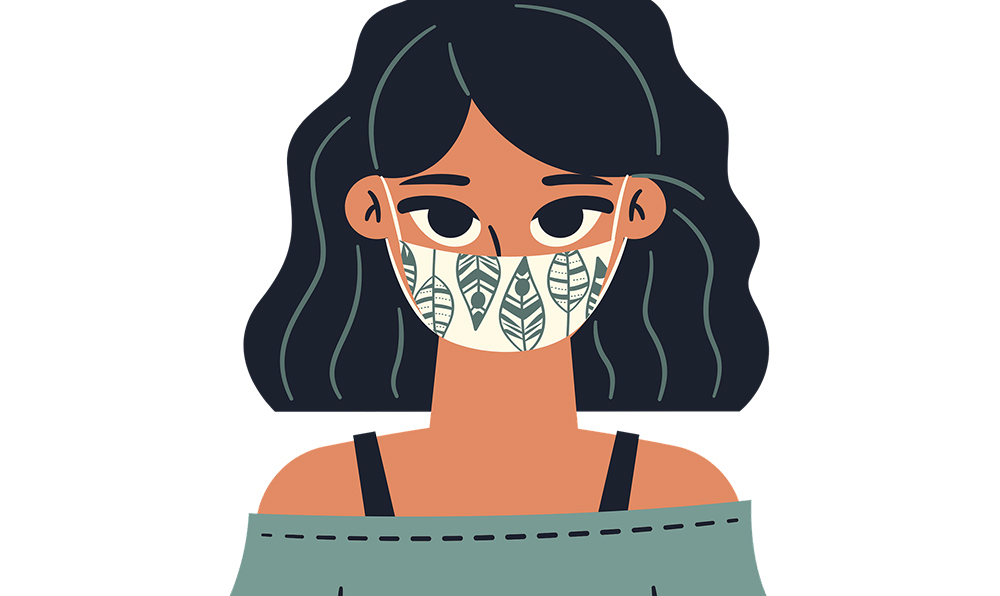
How to wear a mask
How to wear a mask
Dr Nihara Krause, consultant clinical psychologist, founder and CEO stem4, has these tips on how to wear a mask
Masks & Being Kind
Research suggests that our brains are usually good at detecting faces and their expressions, in order to keep us safe. Our ‘flight or fight’ response, an inbuilt survival mechanism to protect us, relies on being able to assess if we are confronting a friend or foe; protect against being deceived through (often minute) facial changes; and pick up on distress in order to comfort others. With important elements of this communication covered through the wearing of masks or facial protection, learning to communicate in other ways has never been more important. Here are some ways to make sure we are communicating kindly when wearing a mask:
- Since the smile you accompany your words with will be lost on the other person, choose your words carefully and endeavour to be kind in what you say.
- Think of other ways in which you communicate. Being socially distanced also takes away connection so have an open posture, stand less aggressively, be expressive with your gestures and try and smile with your eyes.
- Take time to express warm emotions verbally. Usually it might feel easy to guess when a person loves you by the look on their face. However, when the face is partially covered, this might be much harder.
How do masks impact our mental health?
For some people with mental ill health conditions, masks or face coverings might feel like either a punishment or a blessing in disguise. For someone with agoraphobia or acute anxiety, a face covering may feel like a restraint, causing worries about breathing. Remember, there will always be oxygen filtering through fabric as well as the exhalation of carbon dioxide so you will remain safe. Surgeons, for example, have worn face masks for very long periods of time for centuries without being negatively affected. Think instead of the freedom it provides you and look forward to what you can achieve by wearing one. Practice controlled breathing, in for five counts and out for seven. Have small breaks from wearing a mask when it’s safe to – for example when you are alone or outside.
For someone who has facial concerns, social anxiety or body image issues, a mask can sometimes help (for example, if it covers blushing you are over conscious of, or a scar that has caused you emotional pain.) However, for others, it may draw attention to parts of your face or body that you don’t want. In someone with an eating disorder, for example, their face may be the part of their body they wish to highlight. Having to cover their face may lead to becoming more conscious of their body. According to research by Sadr and Krowicki ( 2017) hiding half the face significantly increased its attractiveness to observers. Of course, this is not new. When historically women have used veils, large glasses or hair falling across their face to emphasise features.
Masks can also be difficult for people with social anxiety since they may find it even harder to relate to others, especially in terms of not knowing how welcoming or not they may be. Try and focus on their words and gestures to reassure yourself. Similarly, for people who have social-communication difficulties such as individuals with Autism Spectrum Disorder (ASD) face-covering can prove a challenge. Learning to ‘read’ people through non-verbal features such as noticing the lifting of eye brows, the crinkling of eyes when they smile or their posture can help.
Face coverings can be frightening for individuals who have experienced trauma through assault or muggings, especially if the perpetrator has worn a face mask. Seek support to deal with the trauma and make special effort to notice non-verbal cues.
Top Tips on how to wear a mask
If you are amongst those who feel impacted by wearing a mask, try these tips to help:
- Practice wearing a mask for short periods at home so you get used to it
- Wear it when you are out and notice how many others are all sharing in wearing masks too. See yourself as belonging rather than isolated, there’s company in a crowd.
- Have some comforting statements you can say to yourself. For example, ‘I am safe and comfortable behind this mask.’ Or ‘I can lower this easily when I want to.’
- Make sure you try a variety of coverings to choose what works best. Perhaps even treat yourself to something special and that makes you feel good, either because it supports a charity* or because it looks fashionable or unique.
- Keep practising being kind in your communication, if we all did this, we would all feel more comfortable in our connections
stem4 is a Wimbledon based, award winning charity that supports teenage mental health. In order to foster positive teenage mental health, it provides evidence-based education, builds resilience, enhances motivation to change, and signposts to ensure early intervention and action. stem4 focuses on commonly occurring mental health issues in teenagers including eating disorders, anxiety, depression, self-harm and addiction.
stem4 has washable and reusable face masks on sale for £8.50 in four different styles through www.stem4.org.uk. The face masks are double layered, double seamed, cotton masks with piping around the edges and comfortable ear loop elastic.
100% of proceeds go directly to stem4 to benefit teenagers and young people during these difficult times.






